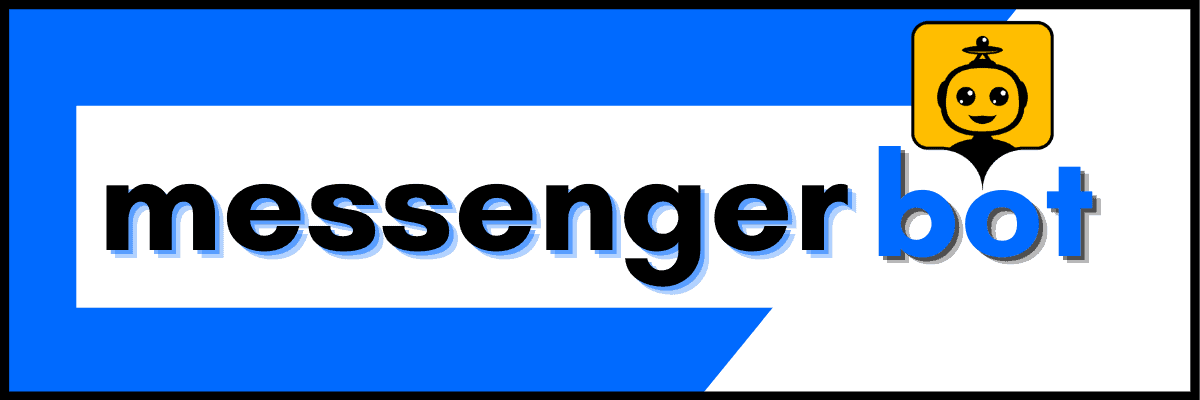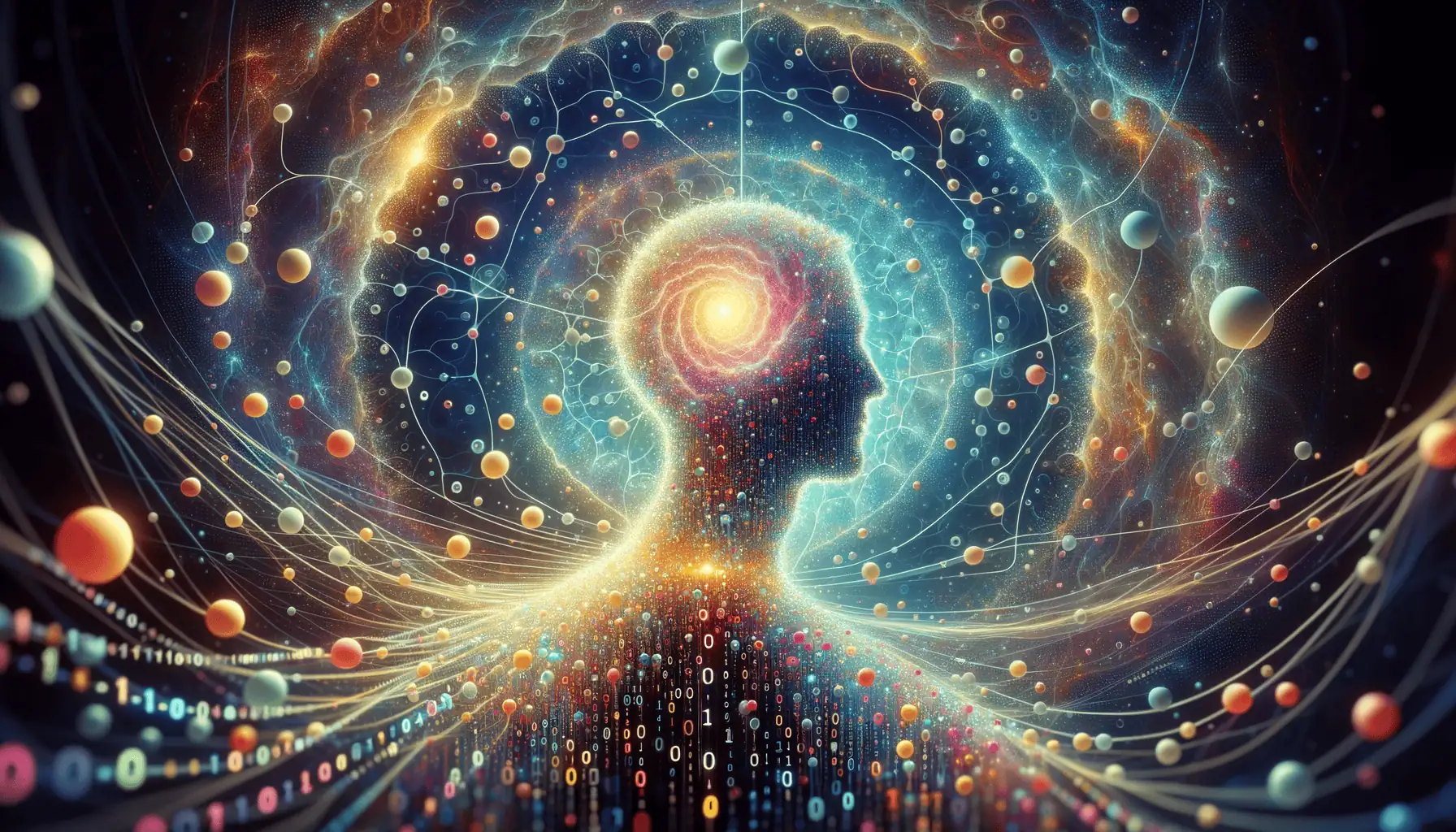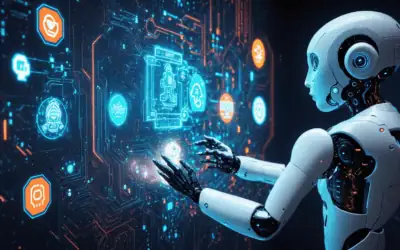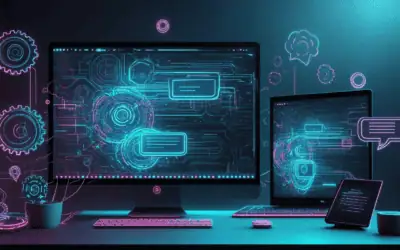In the age of artificial intelligence, personal chatbots have emerged as powerful digital companions, revolutionizing the way we interact with technology. Whether you’re seeking a virtual assistant, a study buddy, or simply an AI-powered conversationalist, creating your own personal chatbot has never been more accessible. This comprehensive guide will walk you through the process of developing your very own artificial intelligence chatbot, exploring the best AI chats and platforms available. From understanding the basics of personal chat bots to leveraging advanced chat bots online, we’ll cover everything you need to know to embark on your AI-powered journey. Discover the benefits of personal AI chatbots, learn about free alternatives, and uncover the secrets to creating a ChatGPT-like experience tailored to your needs. Get ready to dive into the world of artificial intelligence online chat and unlock the potential of your personalized digital companion.
Understanding Personal Chatbots
In the rapidly evolving landscape of artificial intelligence, personal chatbots have emerged as powerful tools for enhancing digital communication and productivity. As we delve into the world of AI-driven conversation, it’s crucial to understand what these digital assistants are and how they can revolutionize our daily interactions.
What is a personal chatbot?
A personal chatbot is an artificial intelligence-powered software application designed to engage in one-on-one conversations with users, providing personalized assistance, information, and support. These advanced digital companions utilize natural language processing (NLP) and machine learning algorithms to understand user queries, interpret context, and deliver tailored responses. Personal chatbots can be integrated into various platforms, including messaging apps, websites, and smart devices, offering a range of functionalities such as scheduling, task management, information retrieval, and emotional support.
Unlike generic chatbots, personal chatbots learn from individual user interactions, adapting their responses and recommendations over time to better suit the user’s preferences and needs. They can handle complex queries, offer proactive suggestions, and even anticipate user requirements based on historical data and behavioral patterns. While personal chatbots enhance user experience and productivity, it’s crucial to consider privacy and security implications, as they often handle sensitive personal information. Recent advancements in AI technology have significantly improved the capabilities of personal chatbots, making them increasingly sophisticated and human-like in their interactions.
At Messenger Bot, we’ve harnessed the power of artificial intelligence to create a versatile platform that can be customized to serve as your personal AI chatbot, capable of managing interactions across various digital channels.
Benefits of using a personal AI chatbot
Incorporating a personal AI chatbot into your digital life can offer numerous advantages:
- 24/7 Availability: Your personal chatbot is always ready to assist, providing instant responses at any time of day or night.
- Personalized Experience: As the chatbot learns from your interactions, it tailors its responses to your preferences, creating a more personalized and efficient experience.
- Increased Productivity: By handling routine tasks and queries, personal chatbots free up your time for more important activities.
- Multilingual Support: Many personal chatbots offer multilingual capabilities, breaking down language barriers in global communications.
- Emotional Support: Advanced AI chatbots can provide a form of emotional support, offering a non-judgmental ear for users to express their thoughts and feelings.
- Information Aggregation: Personal chatbots can gather and summarize information from various sources, providing you with concise, relevant data.
- Seamless Integration: These AI assistants can integrate with other apps and services, creating a cohesive digital ecosystem for users.
By leveraging the capabilities of personal AI chatbots, individuals and businesses can enhance their digital interactions, streamline processes, and create more engaging user experiences. As the technology continues to evolve, the potential applications for personal chatbots are bound to expand, offering even more sophisticated and nuanced assistance in our daily lives.

Creating Your Own Personalized Chatbot
As the demand for personalized digital experiences grows, creating your own AI chatbot has become an exciting possibility for individuals and businesses alike. Let’s explore how you can develop a tailored artificial intelligence chatbot that caters to your specific needs and enhances your digital interactions.
How to make a personalized chatbot?
Creating a personalized chatbot involves several key steps:
- Define Your Chatbot’s Purpose: Start by identifying specific goals for your chatbot, such as customer service or lead generation. Determine your target audience and use cases, ensuring alignment with your objectives and key performance indicators (KPIs).
- Select the Optimal Platform: Evaluate various platforms like DialogFlow, IBM Watson, or Microsoft Bot Framework. Consider factors such as scalability, integration capabilities, and pricing. At Messenger Bot, we offer a robust platform that combines ease of use with powerful AI capabilities.
- Design Conversational Flow: Map out user journeys and decision trees to create a logical flow of conversation. Craft personalized greetings and responses, and implement context-aware conversations using intent recognition.
- Develop Natural Language Understanding (NLU): Train your chatbot on domain-specific vocabulary and implement entity extraction for more personalized interactions. Utilize machine learning algorithms for continuous improvement of your artificial intelligence bot.
- Integrate with Data Sources: Connect your chatbot to CRM systems for accessing user profile information and implement APIs for real-time data access. Ensure compliance with data privacy regulations like GDPR.
- Implement Personalization Features: Use sentiment analysis to tailor responses, incorporate user preferences and history, and develop dynamic content based on user interactions to create a truly personal chat bot experience.
- Design User Interface: Create an intuitive chat interface with rich media support and ensure mobile responsiveness for seamless interactions across devices.
- Rigorous Testing and Iteration: Conduct A/B testing on conversation flows, analyze user interactions, and continuously refine your chatbot based on performance metrics.
- Deploy and Monitor: Choose an appropriate hosting solution and implement analytics tools for tracking performance. Set up alerts for potential issues or anomalies.
- Ongoing Maintenance and Improvement: Regularly update the knowledge base and responses, implement machine learning for continuous optimization, and stay current with emerging chatbot technologies and best practices.
By following these steps, you can create a sophisticated personal AI chatbot that evolves with user interactions and provides valuable assistance across various digital platforms. Our comprehensive tutorials can guide you through each stage of the process, helping you build a chatbot that truly reflects your brand and meets your users’ needs.
Choosing the right artificial intelligence chatbot platform
Selecting the appropriate platform is crucial for developing an effective personal chatbot. Here are key factors to consider when choosing an artificial intelligence chatbot platform:
- Ease of Use: Look for platforms with user-friendly interfaces that don’t require extensive coding knowledge. This allows for quicker development and easier maintenance.
- AI Capabilities: Ensure the platform offers robust natural language processing (NLP) and machine learning capabilities to understand and respond to user queries effectively.
- Customization Options: Choose a platform that allows for extensive customization of your chatbot’s appearance, behavior, and responses to align with your brand identity.
- Integration Capabilities: The platform should easily integrate with your existing systems and third-party tools, such as CRM software or analytics platforms.
- Scalability: As your needs grow, your chosen platform should be able to handle increased user interactions without compromising performance.
- Multi-channel Support: Look for platforms that enable deployment across various channels, including websites, social media, and messaging apps.
- Analytics and Reporting: Robust analytics tools are essential for monitoring your chatbot’s performance and making data-driven improvements.
- Security and Compliance: Ensure the platform adheres to data protection regulations and offers strong security measures to protect user information.
- Cost-effectiveness: Consider the pricing structure and ensure it aligns with your budget and expected return on investment.
While there are several platforms available, such as Dialogflow by Google and IBM Watson Assistant, our Messenger Bot platform offers a unique combination of advanced AI capabilities, user-friendly interface, and seamless integration options. We provide the tools and support needed to create sophisticated personal chatbots that can engage users across multiple channels, including Instagram and Facebook Messenger.
By carefully evaluating these factors and choosing the right platform, you can create a personal AI chatbot that not only meets your current needs but also has the potential to grow and adapt to future requirements. Remember, the best ai chats are those that continually learn and improve based on user interactions, providing an ever-enhancing experience for your audience.
Exploring Free AI Chatbot Options
As the demand for personal AI assistants grows, many are seeking cost-effective solutions to enhance their digital interactions. Let’s dive into the world of free AI chatbots and explore some of the best options available in 2024.
Is there a free AI chatbot?
Yes, there are several free AI chatbots available that offer impressive capabilities without any cost. Here are some of the top free personal chatbot options:
- ChatGPT: Developed by OpenAI, ChatGPT offers powerful language understanding and generation capabilities. It’s an excellent choice for general conversations, writing assistance, and problem-solving.
- Google Bard: Google’s AI chatbot integrates seamlessly with other Google services, making it a versatile option for those already invested in the Google ecosystem.
- Claude AI: Created by Anthropic, Claude AI provides a free tier with robust conversational abilities and a focus on ethical AI interactions.
- Bing Chat: Microsoft’s AI-powered chat is integrated into the Bing search engine, offering a blend of conversational AI and internet search capabilities.
- HuggingChat: An open-source option from Hugging Face, HuggingChat is completely free and offers a transparent approach to AI chatbot technology.
While these free options provide excellent starting points for personal AI chatbots, it’s important to note that they may have limitations compared to paid services. For those seeking more advanced features and customization options, our Messenger Bot platform offers a comprehensive solution that goes beyond basic chatbot functionality.
Best personal chatbot free alternatives
When exploring the best personal chatbot free alternatives, consider these options that cater to various needs:
- Character.AI: This platform allows users to create and interact with unique AI personalities, making it ideal for creative writing or role-playing scenarios.
- Replika: Designed as an AI companion, Replika offers emotional support and casual conversation, with basic features available for free.
- Jasper Chat: While primarily known for its AI writing capabilities, Jasper Chat also offers limited free access to its conversational AI features.
- YouChat: Integrated with You.com’s search engine, YouChat combines AI conversation with real-time internet information.
- Pi: Developed by Inflection AI, Pi focuses on being a helpful and friendly conversational assistant, available at no cost.
These free AI chatbots offer a range of capabilities, from general conversation to specific tasks like writing assistance or emotional support. However, for businesses and individuals looking for more tailored solutions, our Messenger Bot features provide advanced customization and integration options that go beyond what free alternatives can offer.
While free chatbots are an excellent starting point, they often come with limitations such as restricted usage, less personalization, and potential privacy concerns. For those seeking a more robust solution, our platform offers a free trial that allows you to experience the full potential of a customized AI chatbot without any initial investment.
As artificial intelligence continues to evolve, the landscape of personal chatbots is constantly changing. Staying informed about the latest developments in AI chat apps and chatbot optimization can help you make the most of these powerful tools, whether you choose a free alternative or a more advanced solution like our Messenger Bot platform.
Developing a ChatGPT-like Experience
As the demand for personalized AI assistants grows, many are curious about creating their own ChatGPT-like experience. While developing an exact replica of ChatGPT is not feasible for most individuals or businesses, there are several ways to create similar AI-powered chatbots that can enhance your personal or professional life.
Can I create my own ChatGPT?
While creating an exact replica of ChatGPT isn’t possible for most, you can develop similar AI language models or customize existing ones:
- Use OpenAI’s GPT-3 API: Access pre-trained models and fine-tune them for specific tasks, allowing you to create a powerful personal chatbot tailored to your needs.
- Explore open-source alternatives: Projects like GPT-J, GPT-Neo, and BLOOM offer customizable language models that can be adapted for personal use.
- Train a model from scratch: This approach requires significant computational resources and expertise in machine learning, making it less feasible for most individuals.
- Utilize OpenAI’s GPTs: Create custom chatbots without coding using OpenAI’s platform, which allows for personalization of AI models.
- Leverage other AI platforms: Google’s BERT, Microsoft’s DialoGPT, or Facebook’s BlenderBot provide frameworks for building conversational AI that can mimic some aspects of ChatGPT.
- Fine-tune existing models: Adapt pre-trained models to specific domains or tasks using transfer learning techniques, creating a more personalized chatbot experience.
- Collaborate with AI researchers: Partner with institutions or companies specializing in natural language processing to develop advanced personal AI chatbots.
While these options offer paths to creating ChatGPT-like experiences, it’s important to note that developing such models requires substantial resources, data, and expertise in artificial intelligence and natural language processing. For those looking for a more accessible solution, our Messenger Bot platform offers a user-friendly way to create personalized chatbots without the need for extensive AI knowledge or resources.
Leveraging chat bots online for personal use
For those seeking to harness the power of AI chatbots for personal use, there are several ways to leverage existing platforms and tools:
- Customizable AI assistants: Platforms like Personal AI allow users to create AI versions of themselves, which can be used for various personal tasks and interactions.
- Task-specific chatbots: Create or use chatbots designed for specific personal tasks such as scheduling, reminders, or even personal journaling.
- Language learning companions: AI-powered language exchange apps like Duolingo use chatbots to help users practice conversations in foreign languages.
- Mental health support: Apps like Woebot offer AI-driven cognitive behavioral therapy, providing personal support and mindfulness exercises.
- Productivity assistants: Integrate AI chatbots with productivity tools to manage tasks, set reminders, and organize your personal life more efficiently.
- Personal finance advisors: Some fintech companies offer AI-powered chatbots that can provide personalized financial advice and help with budgeting.
- Creative writing aids: Use AI writing assistants to help with personal writing projects, brainstorming ideas, or overcoming writer’s block.
While these options provide valuable personal AI chatbot experiences, it’s crucial to consider privacy and data security when using such tools. Our Messenger Bot platform offers a secure and customizable solution for those looking to create their own personal AI chatbot with advanced features and robust privacy protections.
By leveraging chat bots online for personal use, you can enhance various aspects of your daily life, from productivity to personal growth. As artificial intelligence continues to evolve, the possibilities for personal AI chatbots are expanding, offering increasingly sophisticated and tailored experiences.
Whether you’re looking to create a simple task assistant or a more complex personal AI companion, the key is to choose a platform that aligns with your specific needs and technical capabilities. Our free trial offers an excellent starting point for exploring the potential of personal AI chatbots, allowing you to experience the benefits of advanced AI technology in a user-friendly environment.
As we continue to push the boundaries of AI-driven chatbot optimization, the line between personal digital assistants and sophisticated AI companions continues to blur, opening up exciting possibilities for enhancing our daily lives through artificial intelligence online chat.
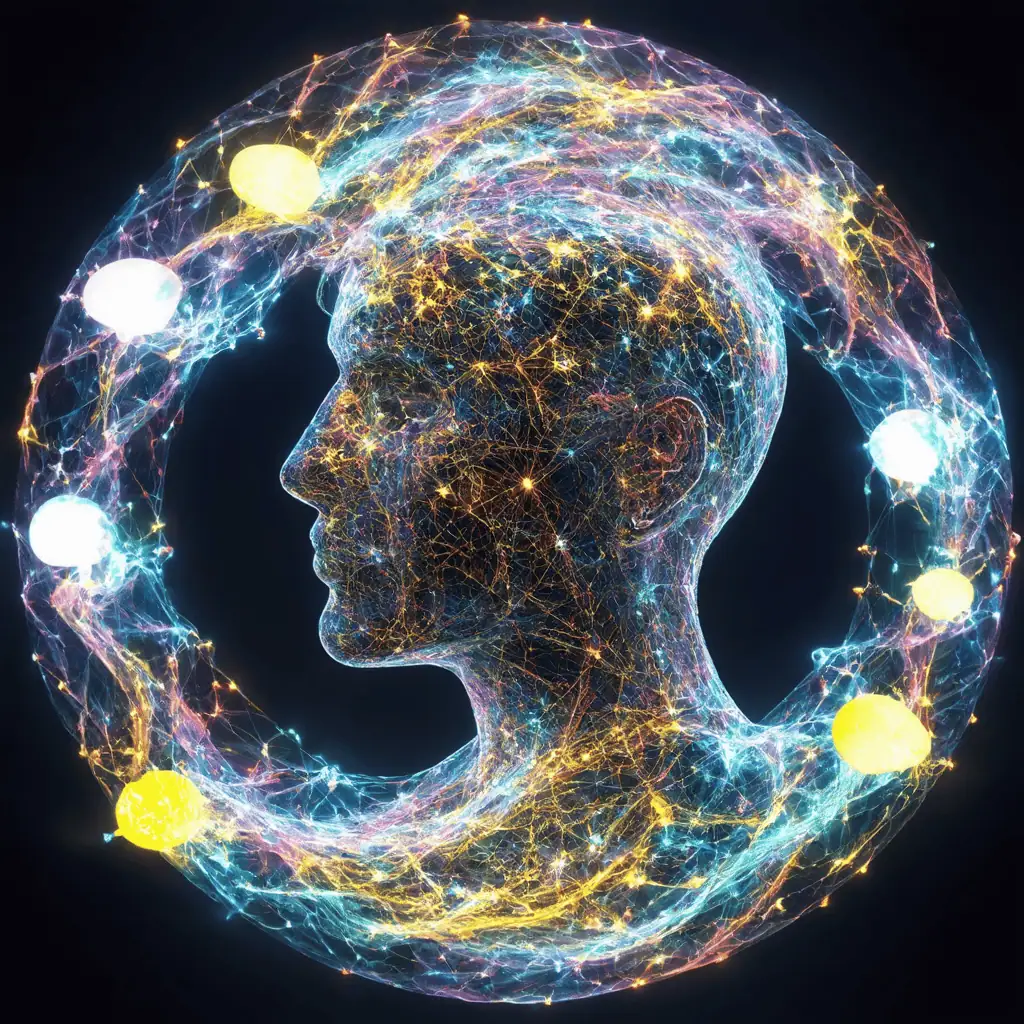
Safety Considerations for Personal Chatbots
As personal chatbots become increasingly integrated into our daily lives, it’s crucial to understand the safety implications and take necessary precautions. While these artificial intelligence bots offer numerous benefits, they also present potential risks that users should be aware of.
Is chatbot safe or not?
Chatbot safety is a nuanced topic that requires careful consideration. While personal AI chatbots can significantly enhance user experiences and streamline interactions, they also come with inherent security concerns. The safety of a chatbot largely depends on its design, implementation, and the security measures put in place by its developers.
Here are some key points to consider regarding chatbot safety:
- Data Protection: Reputable chatbot providers implement robust encryption and security protocols to protect user data. For instance, our Messenger Bot platform uses advanced encryption techniques to safeguard user information.
- Privacy Concerns: The storage of conversation data on servers can create vulnerabilities. It’s essential to choose platforms that prioritize data privacy and comply with regulations like GDPR.
- Potential for Misuse: While rare, there have been instances of chatbots being manipulated to spread misinformation or engage in harmful behaviors. Users should be cautious and verify information obtained from chatbots.
- Transparency: Ethical chatbot providers are transparent about their AI’s capabilities and limitations. For example, Anthropic, the creators of Claude AI, emphasize the importance of clear communication about AI capabilities.
- User Authentication: Implementing multi-factor authentication adds an extra layer of security, preventing unauthorized access to personal chatbots.
Recent studies indicate that while 73% of consumers express concern about chatbot data security, the adoption of AI security measures is on the rise. The AI security market is projected to reach $38.2 billion by 2026, reflecting the industry’s commitment to addressing these concerns.
To ensure a safe chatbot experience, users should:
- Choose reputable chatbot platforms with strong security measures
- Avoid sharing sensitive personal information with chatbots
- Regularly review and update privacy settings
- Stay informed about the latest security features and updates
While chatbots are not inherently unsafe, users should exercise caution and follow best practices to ensure a secure experience. As AI technology evolves, so do security measures, continuously improving chatbot safety.
Ensuring privacy with your personal chat bot
Privacy is a paramount concern when using personal chatbots. To safeguard your information and maintain control over your data, consider the following strategies:
- Choose privacy-focused platforms: Opt for chatbot services that prioritize user privacy. Our Messenger Bot platform, for instance, is designed with robust privacy protections to ensure your conversations remain confidential.
- Understand data usage policies: Carefully read and understand the privacy policies of the chatbot service you’re using. Look for information on data collection, storage, and sharing practices.
- Limit personal information sharing: Be cautious about the type and amount of personal information you share with your chatbot. Avoid providing sensitive data like financial details or social security numbers.
- Use end-to-end encryption: When available, opt for chatbots that offer end-to-end encryption. This ensures that your conversations can only be read by you and the intended recipient.
- Regularly review and delete chat history: Periodically review your chat history and delete any sensitive information. Many platforms, including ours, offer options to clear chat logs.
- Enable additional security features: Take advantage of security features like two-factor authentication or biometric login options if offered by your chatbot platform.
- Keep software updated: Ensure that your chatbot application and the device you’re using it on are always updated with the latest security patches.
- Be wary of third-party integrations: If your chatbot integrates with other services, understand how this affects your data privacy and only allow necessary permissions.
- Use VPNs for added security: Consider using a Virtual Private Network (VPN) when interacting with your chatbot, especially on public Wi-Fi networks.
- Educate yourself on AI ethics: Stay informed about AI ethics and best practices. Organizations like the Partnership on AI provide valuable resources on responsible AI use.
By implementing these strategies, you can significantly enhance the privacy and security of your interactions with personal chatbots. Remember, while artificial intelligence chatbots can be powerful tools, it’s crucial to approach their use with a mindset of privacy awareness and proactive security.
At Messenger Bot, we understand the importance of privacy in the realm of personal AI chatbots. That’s why we’ve implemented stringent security measures and offer transparent control over your data. Our commitment to privacy extends beyond mere compliance; we strive to empower users with the tools and knowledge needed to maintain their digital privacy while enjoying the benefits of advanced AI chat technology.
As the landscape of personal chatbots continues to evolve, staying informed about the latest privacy practices and regularly reassessing your chatbot usage will help ensure a safe and secure experience. Remember, the most effective privacy measure is an informed and vigilant user.
Detecting AI-Powered Conversations
As personal chatbots and artificial intelligence online chat systems become more sophisticated, it’s increasingly important to be able to distinguish between human and AI-driven conversations. This skill is crucial for maintaining authentic interactions and understanding the nature of the communication you’re engaged in.
How can you tell if someone is using chatbot?
Identifying chatbot usage requires attention to several key indicators that set AI-powered conversations apart from human interactions. Here are some telltale signs to look out for:
- Repetitive responses: Chatbots often rely on pre-programmed answers, leading to repetition when faced with similar queries. This lack of variability can be a clear indicator of AI involvement.
- Immediate replies: Unnaturally quick responses, especially to complex questions, can indicate automated systems. While our Messenger Bot is designed for rapid responses, human conversations typically involve some delay.
- Limited emotional intelligence: AI chatbots typically struggle to recognize or respond appropriately to emotional cues or subtle humor. This limitation is a key differentiator from human interactions.
- Rigid language patterns: Bots often use formulaic phrases and may struggle with colloquialisms or idiomatic expressions. Look for overly formal or consistently structured responses.
- Inability to clarify: When asked for elaboration, chatbots may repeat information or provide irrelevant responses. Humans, on the other hand, can usually offer additional context or explanations.
- Lack of context awareness: AI bots often struggle to maintain coherent conversations across multiple topics or understand nuanced references from earlier in the conversation.
- Absence of personal anecdotes: Unlike humans, chatbots can’t draw from personal experiences to enrich conversations, making their responses feel less authentic.
Recent research supports these observations. A study presented at the IEEE International Conference on Artificial Intelligence and Knowledge Engineering (2022) confirmed these indicators as reliable chatbot detection methods. Furthermore, a 2023 study published in the Journal of Artificial Intelligence Research found that 78% of users could identify chatbots through these signs after brief interactions.
It’s worth noting that advanced AI platforms like Anthropic’s Claude or OpenAI’s GPT models are becoming increasingly sophisticated, making detection more challenging. However, even these advanced systems can be identified through careful observation of conversation patterns and content.
At Messenger Bot, we prioritize transparency in AI interactions. While our goal is to provide seamless and efficient communication, we also believe in maintaining clear distinctions between AI and human interactions to ensure ethical use of technology.
Distinguishing between human and artificial intelligence online chat
As artificial intelligence chatbots become more advanced, distinguishing between human and AI-driven online chats can be challenging. However, there are several key factors to consider when trying to identify the nature of your online conversation:
- Contextual understanding: Humans excel at grasping context and subtext in conversations. If the responses consistently fail to pick up on nuances or contextual clues, it might be an AI chatbot.
- Response time variability: Human response times typically vary based on the complexity of the question and other factors. AI chatbots, even sophisticated ones, often have more consistent response times regardless of the query’s complexity.
- Emotional resonance: While AI has made strides in emotional intelligence, humans still have a significant edge in conveying and responding to emotional nuances in text-based communication.
- Creativity and unpredictability: Humans can provide unexpected or creative responses that deviate from standard patterns. AI responses, while potentially sophisticated, often follow more predictable patterns.
- Memory and continuity: Humans naturally remember previous parts of a conversation and can refer back to them seamlessly. While some AI chatbots like our Messenger Bot have memory features, they may not always maintain the same level of conversational continuity as humans.
- Ability to go off-topic: Humans can easily switch between topics or go off on tangents. AI chatbots, even advanced ones, tend to stay more focused on the immediate topic or question at hand.
- Cultural and current event awareness: Humans naturally incorporate current events, pop culture references, or localized knowledge into their conversations. AI chatbots may struggle with very recent events or highly specific cultural references.
It’s important to note that as AI technology advances, these distinctions may become more subtle. For instance, Anthropic’s AI models are pushing the boundaries of what’s possible in terms of natural language processing and conversational ability.
At Messenger Bot, we’re committed to developing AI chat apps that enhance human interactions rather than replace them entirely. Our goal is to create personal AI chatbots that complement human communication skills, providing efficient and helpful responses while maintaining transparency about their AI nature.
To stay informed about the latest developments in AI chat technology and how to distinguish between human and AI interactions, we recommend following reputable AI research publications and staying updated with our Messenger Bot tutorials. As the field of artificial intelligence online chat continues to evolve, staying educated and aware will be key to navigating these increasingly sophisticated digital interactions.
Advanced Features and Applications
As personal chatbots continue to evolve, they’re incorporating increasingly sophisticated features and finding new applications across various platforms. These advancements are pushing the boundaries of what artificial intelligence chatbots can achieve, offering users more personalized and efficient experiences.
PI, your personal AI on WhatsApp: Exploring Personal AI WhatsApp number free
One of the most exciting developments in the world of personal chatbots is the integration of AI assistants into popular messaging platforms like WhatsApp. PI, short for “Personal Intelligence,” is a prime example of this trend, offering users a free personal AI assistant directly through WhatsApp.
Here’s what you need to know about PI and similar WhatsApp AI chatbots:
- Easy access: Users can interact with PI by simply adding its WhatsApp number to their contacts and sending a message, making it incredibly accessible.
- Wide range of capabilities: These AI assistants can help with tasks such as answering questions, providing recommendations, and even assisting with language translation.
- Privacy considerations: While convenient, it’s important to be mindful of the information shared with these AI chatbots, as conversations may be analyzed to improve the service.
- Customization options: Some personal AI chatbots allow users to customize their experience, tailoring the assistant’s personality and areas of expertise.
At Messenger Bot, we’re exploring similar integrations to bring our AI capabilities to popular messaging platforms. Our goal is to provide users with seamless access to personal AI chatbots across various channels, enhancing the way people interact with artificial intelligence in their daily lives.
It’s worth noting that while PI and similar services offer free access to personal AI on WhatsApp, they may have limitations compared to more comprehensive AI chat apps. For those seeking more advanced features, dedicated AI chatbot platforms like ours offer a wider range of customization options and integrations.
Best ai chats and ai chat apps for enhanced functionality
The landscape of ai chat apps is rapidly evolving, with numerous options available for users seeking enhanced functionality from their personal chatbots. Here’s an overview of some of the best ai chats currently available:
- Messenger Bot: Our platform offers a comprehensive suite of features, including natural language processing, multi-channel support, and advanced customization options. We pride ourselves on providing one of the most user-friendly interfaces for creating and managing AI chatbots.
- Replika: Known for its emotional intelligence, Replika focuses on providing a companionship experience, learning from conversations to become more personalized over time.
- ChatGPT: Developed by OpenAI, ChatGPT offers impressive language understanding and generation capabilities, making it suitable for a wide range of applications from creative writing to problem-solving.
- Xiaoice: Popular in China, Xiaoice is known for its advanced emotional intelligence and ability to engage in more human-like conversations.
- Mitsuku: A multiple-time winner of the Loebner Prize, Mitsuku is praised for its ability to engage in human-like conversations across a wide range of topics.
When choosing the best AI chat app for your needs, consider factors such as:
- Customization options
- Integration capabilities with other platforms
- Privacy and data security features
- Specialization in specific tasks or industries
- Multilingual support
At Messenger Bot, we strive to offer a balance of these features, providing a versatile platform that can be tailored to various use cases. Our flexible pricing options ensure that businesses of all sizes can access advanced AI chatbot functionality.
As the field of artificial intelligence chatbots continues to advance, we’re seeing an increasing convergence of features across different platforms. For instance, Anthropic’s AI models are pushing the boundaries of natural language understanding, while other companies are focusing on specialized applications in areas like customer service or mental health support.
The future of personal chatbots and AI chat apps is incredibly promising, with ongoing developments in natural language processing, emotional intelligence, and contextual understanding. As these technologies continue to evolve, we can expect even more sophisticated and helpful AI assistants to become an integral part of our daily lives, enhancing our productivity and providing valuable support across various aspects of work and personal life.
